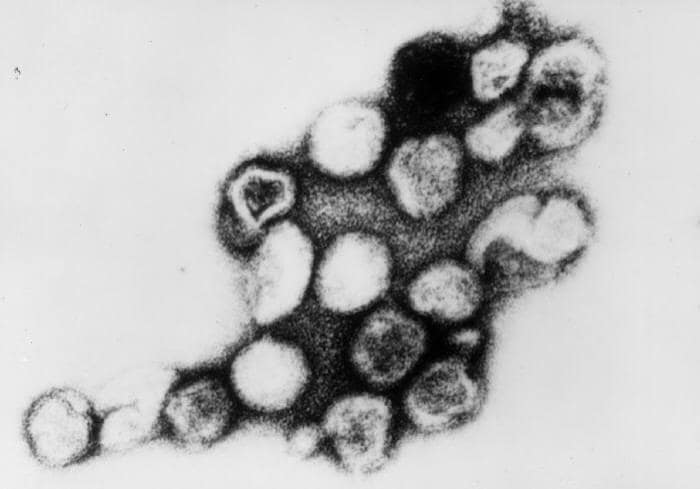Key points
- CDC's Infectious Disease Laboratories provide guidance for rubella specimen collection, storage, and shipment.
- The State Public Health Laboratory (SPHL) refers samples to CDC for confirmatory testing.
- For CRS cases, nasopharyngeal swabs, throat swabs, and urine samples should be collected as close to birth as possible.

Submitting specimens to CDC
The State Public Health Laboratory (SPHL) refers serum and viral samples to CDC for rubella testing, usually for confirmatory testing. Certain circumstances sometimes require that initial testing is done at CDC.
Contact health department first
Available tests
The reference laboratory at CDC uses commercial enzyme-linked immunoassays (EIAs) for rubella IgM and IgG testing and a laboratory-developed assay for IgG avidity testing. The rubella IgM assay is a capture IgM format EIA; the rubella IgG test is an indirect EIA. For RNA detection and genotyping, laboratory developed RT-PCR assays are used.
Instructions for test types
CDC's Infectious Disease Laboratories provides guidance for rubella specimen collection, storage, and shipment. Refer to the Infectious Disease Laboratories Test Directory entry for each test or click on the links below.
Serologic testing (serum samples)
- Rubella serology instructions (Test CDC-10246)
- Rubella serology (IgM and IgG) and avidity instructions (Test CDC-10249)
Rubella RNA detection by RT-PCR or virus isolation
Collecting clinical samples
From CRS cases:
Nasopharyngeal swabs, throat swabs, and urine samples should be collected as close to birth as possible. They should be collected, stored, and shipped as described in the Infectious Disease Laboratories Test Directory entries.
To screen for shedding from confirmed congenital rubella syndrome (CRS) cases, nasopharyngeal, throat and/or urine samples should be collected monthly after the age of 3 months. This determines if rubella RNA is still present in the specimen. Collection of samples can be stopped after 2 consecutive negative tests are obtained.
From cases of rubella persistence:
In some cases, rubella has been known to establish persistent infections in humans. An eye disease known as Fuchs' Uveitis Syndrome (FUS) is associated with persistent rubella virus; and virus has been detected in aqueous humor decades after the original infection.
The strong association between rubella vaccine persistence and development of granulomatous lesions in individuals with various primary immunodeficiency diseases has been established. Infectious mutated vaccine-derived viruses have been recovered from these granulomas.
Specimen shipping
Complete CDC specimen submission form (CDC Form 50.34) to send clinical specimens to CDC from within the United States. Fill out the following:
- Date of onset
- Date of specimen collection
- Date(s) of last rubella vaccination (usually MMR)
- Any recent travel history
- Pregnancy status (if applicable)
- Preliminary results (if available)
- Patient identification number and/or name
- Patient date of birth
Shipment of such samples to CDC can be arranged by local public health offices; or private clinics and hospitals to expedite testing.
Contact information
For additional information and to notify the CDC Viral Vaccine Preventable Disease Branch of specimen shipments, email Dr. Ludmila Perelygina and Dr. LiJuan Hao.
The SPHL should notify the CDC Viral Vaccine Preventable Disease Branch of specimen shipments.
Delivery to CDC
Specimens for rubella testing are delivered by courier to the Specimen Triage and Tracking (STATT) laboratory at CDC. Samples are then delivered to the Viral Vaccine Preventable Diseases Branch (Unit #81).
Turnaround time
The turnaround time for testing samples is at most 5 working days; after the STATT lab delivers samples to the rubella reference lab.
Reports are sent back to the submitter by Electronic Laboratory Information System (ELIMS).
